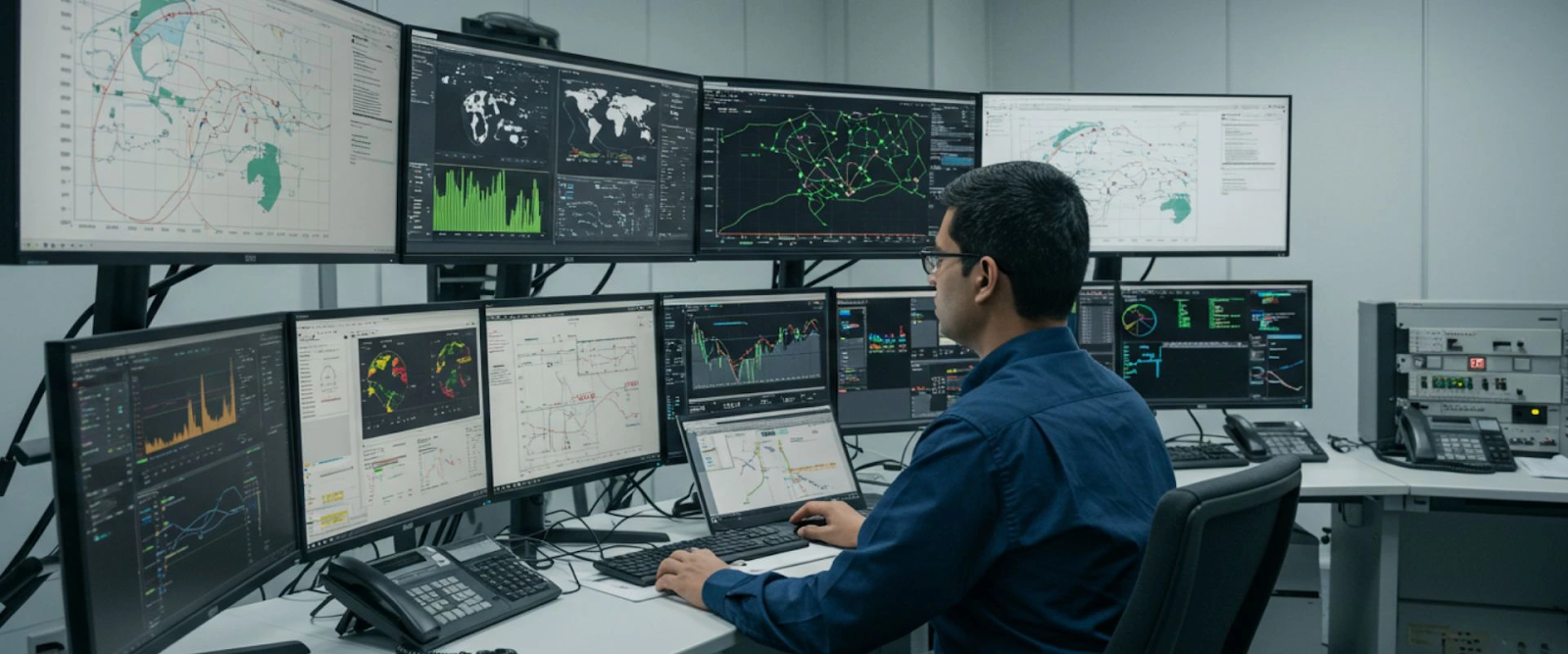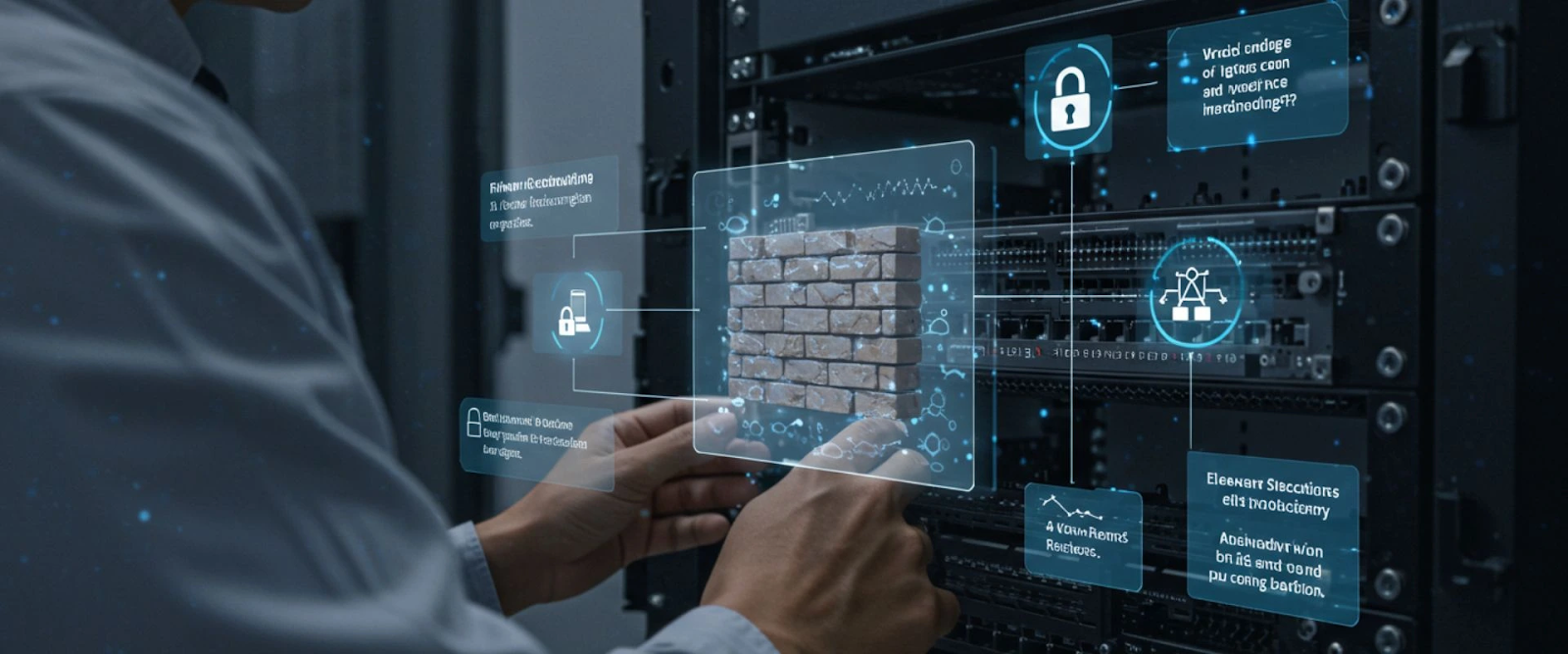Network Monitoring Best Practices for Secure Infrastructure
Introduction to Network Monitoring
Effective network monitoring is essential for maintaining a secure and reliable IT infrastructure. At Febyte, we understand the importance of proactive monitoring strategies to detect potential threats, ensure optimal performance, and minimize downtime. By implementing best practices and leveraging advanced monitoring tools, organizations can safeguard their systems against malicious activities and inefficiencies while ensuring seamless operations.
A key strategy for achieving this is implementing robust network monitoring. By following proven network monitoring best practices, businesses can identify and address vulnerabilities, optimize performance, and ensure the safety of their digital environment.
This guide breaks down the essential best practices for effective network monitoring. You’ll learn actionable strategies and gain insight into current tools and techniques designed to secure and optimize your IT infrastructure.
What is Network Monitoring?
Network monitoring involves continuously observing and managing a network's performance to detect issues like slow traffic, suspicious activity, or outages. Utilizing specialized tools, IT teams can collect data on performance metrics such as bandwidth use, CPU load, and latency. This ensures networks run smoothly, securely, and efficiently.
By employing a solid IT monitoring strategy, businesses can gain real-time insights into their network, respond faster to issues, and ultimately maintain a seamless user experience.
Why Network Monitoring Matters
The digital landscape is constantly evolving, bringing with it increased complexity and a heightened threat environment. Here's why network monitoring best practices is absolutely crucial:
- Proactive Issue Identification
With robust network monitoring tools in place, potential problems can be identified before they escalate. For instance, detecting unusual traffic spikes can help prevent network crashes or security breaches. For businesses relying on IT-driven operations, such as industry-specific IT solutions, proactive maintenance ensures uninterrupted workflows.
- Enhanced Security
Monitoring network activity in real-time helps in identifying unauthorized access, mitigating cyber threats, and maintaining data integrity. Our cybersecurity solutions complement network management by addressing vulnerabilities proactively.
- Optimized Performance
Continuous monitoring ensures that network resources are utilized effectively, avoiding bottlenecks and minimizing downtime. Metrics like latency and bandwidth usage are analyzed to fine-tune infrastructure performance.
- Cost Efficiency
By detecting and resolving issues early, businesses save on expensive repair and recovery measures. Additionally, optimized networks lead to lower operational costs by reducing wasted resources.Investing in network management ensures long-term savings.
- Compliance and Reporting
Monitoring helps ensure that networks comply with regulatory standards. Automated reporting capabilities also make it easier to demonstrate compliance during audits.
- Improved User Experience
A well-monitored network ensures consistent performance, leading to improved reliability for end-users. Be it employees or customers, a seamless experience fosters trust and productivity. At Febyte, our IT solutions focus on creating seamless user experiences.
- Scalability and Future Planning
Insights gained from monitoring tools enable businesses to plan for future growth. Data trends help forecast system requirements and justify investments in infrastructure upgrades.

Best Practices for Secure and Efficient Network Monitoring
Following are the network performance tips that are useful for secure and efficient network monitoring:
1. Set Clear Goals for Your Network Monitoring
Before you begin monitoring, define clear objectives. Decide the metrics and goals you are focusing on. These goals depend on your specific business needs, such as:
- Reducing downtime
- Improving bandwidth efficiency
- Strengthening network security
Clearly established goals will guide your IT monitoring strategy effectively.
2. Use Real-Time Monitoring Tools
Real-time monitoring gives IT teams instant alerts to network issues. By acting immediately, businesses can prevent potential security risks or performance degradation. Tools like SolarWinds Network Performance Monitor or PRTG Network Monitor help businesses continuously track network activity.
At Febyte, we implement customized real-time monitoring technologies tailored to our clients’ needs to ensure their infrastructure is secured and optimized.
3. Regularly Analyze Historical Data
Beyond real-time analytics, analyzing historical network data offers valuable insights into trends and recurring issues. Use this data to predict and address potential concerns before they escalate.
4. Monitor Endpoints and Devices
Modern networks extend beyond servers to include devices like laptops, mobile phones, and IoT gadgets. Ensuring each endpoint is secured and monitored is crucial. Endpoint monitoring tools make this more manageable, keeping every device secure and connected.
5. Establish a Baseline for Normal Network Performance
Know what "normal" looks like for your network. Measure average metrics like latency, jitter, and packet loss rates. Once you have a baseline, spotting irregularities, like unusual traffic spikes, becomes simple.
6. Use Alerts and Automated Responses
Configuring alert thresholds for anomalies ensures your team is aware of issues immediately. By pairing alerts with automated responses, critical actions like shutting down access or rerouting bandwidth can happen faster than human intervention, minimizing risks.

7. Monitor Network Traffic
Understanding how to monitor network traffic is foundational for security and performance.
- Traffic Analysis Tools: Deploy tools like Wireshark or Nagios for detailed packet monitoring.
- Bandwidth Monitoring: Identify which applications or devices consume the most bandwidth. This prevents unexpected slowdowns. For businesses relying on VoIP services, bandwidth issues can result in poor call quality.
For enterprises, leveraging managed network services like those offered by Febyte ensures efficient traffic monitoring across expansive infrastructures.
8. Prioritize Security Monitoring
Security threats are constantly evolving, so integrating security monitoring into your network plan is a must. Consider these essential practices:
- Intrusion Detection Systems (IDS): Tools like Snort or Suricata notify you about unauthorized access and attempted breaches.
- Behavioral Analytics: Abnormal behavior patterns, such as unusual login attempts or file access, can signify potential threats.
- Encryption: Ensure sensitive data moving through your network is fully encrypted.
9. Conduct Regular Updates and Maintenance
Outdated systems are vulnerable to cyberattacks. Routinely update firmware, operating systems, and firewall policies. Regular maintenance and top advanced cybersecurity solutions ensures systems remain aligned with the latest security patches and performance tools.
10. Establish an Incident Response Plan
Despite even the best network monitoring setup, breaches or downtime can occur. That’s why it’s essential to have a documented plan for responding to incidents. This plan should detail steps for containment, eradication, and recovery.

Tools to Elevate Your Network Monitoring Strategy
Modern network monitoring tools simplify monitoring complex infrastructures. Here are popular options:
- PRTG Network Monitor: All-in-one tool for tracking network performance and uptime.
- SolarWinds Network Performance Monitor: Comprehensive tool for monitoring hybrid IT environments.
- Wireshark: A free tool for in-depth network traffic analysis.
- Splunk: Designed for scalable data analysis, making it particularly useful for large enterprises.
How Febyte Can Help
Effective network monitoring requires the right strategies, tools, and dedicated expertise. At Febyte, we offer industry-leading network management services that cover:
- Customized Network Solutions: Febyte works closely with clients to assess their specific requirements and designs network monitoring solutions tailored to their business goals including integration withcustom software solutions and other IT tools.This ensures that the tools and systems implemented deliver maximum value and efficiency.
- Seamless Deployment: The team at Febyte specializes in the smooth installation and configuration of network monitoring tools, minimizing downtime and ensuring a quick transition to the new system.
- Comprehensive Security:
Our cybersecurity solutions work hand-in-hand with network management to protect your data and systems from threats.
- Comprehensive Training: Febyte provides hands-on training for your IT staff, enabling them to effectively use the tools and gain actionable insights from their data.
- Proactive Monitoring and Maintenance: With Febyte's support, clients benefit from proactive diagnostics and regular system maintenance to ensure consistent network performance and uptime.
- Scalable Solutions: Understanding that businesses grow and evolve, Febyte ensures that the solutions implemented can scale alongside your organization, accommodating increasing demands with ease.
- Expert Troubleshooting: The team is equipped to quickly address and resolve any issues that arise, minimizing disruptions and keeping your operations running smoothly.
- 24/7 Support Services: Febyte offers around-the-clock support, ensuring assistance is just a call away whenever needed.
Frequently Asked Questions (FAQ)
What is the most reliable way to monitor network traffic?
Using tools like Wireshark or PRTG Network Monitor provides comprehensive insights into network traffic. Partnering with services like Febyte ensures expert guidance and advanced monitoring techniques.
How often should I update my network monitoring tools?
Update your tools regularly to remain protected from security threats. Integrating automated update features where possible ensures consistent protection without manual effort.
Are automated alerts necessary for network monitoring?
Absolutely. Automated alerts notify IT teams of potential issues in real-time, enabling faster responses to mitigate risks.
Can network monitoring improve security?
Yes, network monitoring is essential for enterprise security. It enables early threat detection, regular auditing, and helps organizations maintain compliance with data security regulations.
Build a Secure and Efficient Network Today
A secure, high-performing network is the backbone of any successful organization. By following these best practices and leveraging expert support, such as the services offered by Febyte, businesses can position themselves for long-term success.
Optimize your infrastructure and ensure peace of mind today.Get in touch with Febyte to start your network security transformation.
